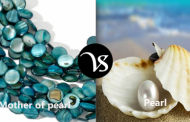 Disk brakes:
Disk brakes:
Disk brake is a wheel that slows rotation of the wheel by friction caused by pushing brake pads against a brake disc with a set of calipers. The brake disk is usually made of cast iron.
Drum brake:
A Drum brake is a brake that uses friction caused by a set of shoes or pads that press against a rotating drum-shaped part which is called a brake drum. It is more economical to maintain.
Differences:
| Basis | Disk brake | Drum brake |
|---|---|---|
| Definition (www.oxforddictionaries.com) |
A type of vehicle brake employing the friction of pads against a disc which is attached to the wheel. | A type of vehicle brake in which brake shoes press against the inside of a drum on the wheel. |
| History | The disc brake was first developed and used in England in 1890s. | The modern automobile drum brake was first used in a car made by Maybach in 1900, although the principle was only later patented in 1902 by Louis Renalt. He used woven asbestos lining for the drum brake lining, as no alternative dissipated heat like the asbestos lining, though Maybach had used a less sophisticated drum brake. |
| Word origin | It was originated in between 1945-50 | It was originated in between 1945-50 |
| Repair and maintenance | It is easier to service. | It is not as much easier to service. |
| Good at | It is good for braking. | It is not as good as disc brake for braking. |
| Pronunciation | Eng (UK): /dɪsk/ /breɪk/ Eng (US): /disk/ /brāk/ |
Eng (UK): /drʌm/ /breɪk/ Eng (US): /drəm/ /brāk/ |
| Cost | They are expensive. | They are cheaper. |
| Advantages/Benefits | Its advantages are:
|
Its advantages are:
|
| Disadvantages | Its disadvantages are:
|
Its disadvantages are:
|
| Example in Sentence |
|
|





